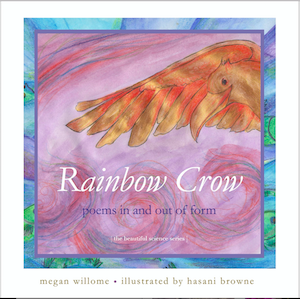 Three Long Mountains, and a Wood + Mad Libs
Three Long Mountains, and a Wood + Mad Libs
When I was a teenager, my mother and I went to New England, and in Maine we visited the home of Edna St. Vincent Millay. At the time I didn’t know much about this poet who meant so much to another poet whose work I admire, Mary Oliver.
Back then I did not know Millay was a spoken-word poet who could throw down. I did not know she was 20 when she wrote “Renascence,” and that when she entered the poem in a contest it only earned a fourth-place prize but grew to become more popular than the first place-winner. I did know that a friend had memorized the opening lines of “Renascence” by heart, and so I decided I should too.
Millay, or “Vincent” as she was known to friends, lived from 1892-1950. A contemporary of Robert Frost, she won the Pulitzer prize a year before he did. Her plan was to become a concert pianist, but her hands were thought to be too small, so she wrote poems instead. She also wrote short stories and plays. She lived loud and bright and free. Her poems are both romantic and feminist, two adjectives poets still struggle to unite. Poet and critic Louis Untermeyer said of Millay, “There was no other voice like hers in America. It was the sound of the ax on fresh wood.”
All I could see from where I stood
Was three long mountains and a wood;
I turned and looked another way,
And saw three islands in a bay.
So with my eyes I traced the line
Of the horizon, thin and fine,
Straight around till I was come
Back to where I’d started from;
And all I saw from where I stood
Was three long mountains and a wood.
—Edna St. Vincent Millay
Judging by these ten lines, the poem doesn’t seem very ax-like. And yet, this 200-line poem has endured. It gets intense as it unfolds: Infinity settles over the poet, forcing her six feet underground, and then rain comes and washes away the grave she is lying in, and she lives again. (That’s the meaning of the word “renascence,” a rising.)
But we’ll focus only on these ten lines we’re learning. Sometimes we need to stand where we are and look — look all the way around. So let’s use the poem to make our own Mad Libs. Follow the instructions and fill in these blanks. Don’t worry about rhyming.
Try It: Mad Libs Poetry Prompt
1. Go to the window or, better, yet, go outside.
All I could see from where I stood
Was _____ and a _____;
2. Now turn and look the other way.
And saw _____.
3. Make a circle. Let your eyes trace “the line / Of the horizon, thin and fine,” between the first view and the second. Come all the way around, “Back to where I’d started from.” What does this tell you about yourself? Your life? The view from your room?
Here’s mine:
All I could see from where I stood
Was red flowers fading and purple berries weighing down a bush
Then turned and looked the other way
And saw a cactus that never did come to
Any day now a hard freeze will beat these bushes back to the succulent’s emptiness
Perhaps next year it will bear yellow again
Taking the five or so minutes it took to fill in the blanks had a renascent effect on me. I forgot the grave feelings weighing me down. For a few minutes I focused only on plants. Each one has a cycle of life: the yellow, a spring bloom; the red, a summer bloom; the purple, an autumn one.
Relationships have seasons too. It seems all created things cycle.
Photo by cpo57, Creative Commons, via Flickr. Post by Megan Willome.
Browse more By Heart
“Megan Willome has captured the essence of crow in this delightful children’s collection. Not only do the poems introduce the reader to the unusual habits and nature of this bird, but also different forms of poetry as well.”
—Michelle Ortega, poet and children’s speech pathologist
- Perspective: The Two, The Only: Calvin and Hobbes - December 16, 2022
- Children’s Book Club: A Very Haunted Christmas - December 9, 2022
- By Heart: ‘The night is darkening round me’ by Emily Brontë - December 2, 2022

Leave a Reply